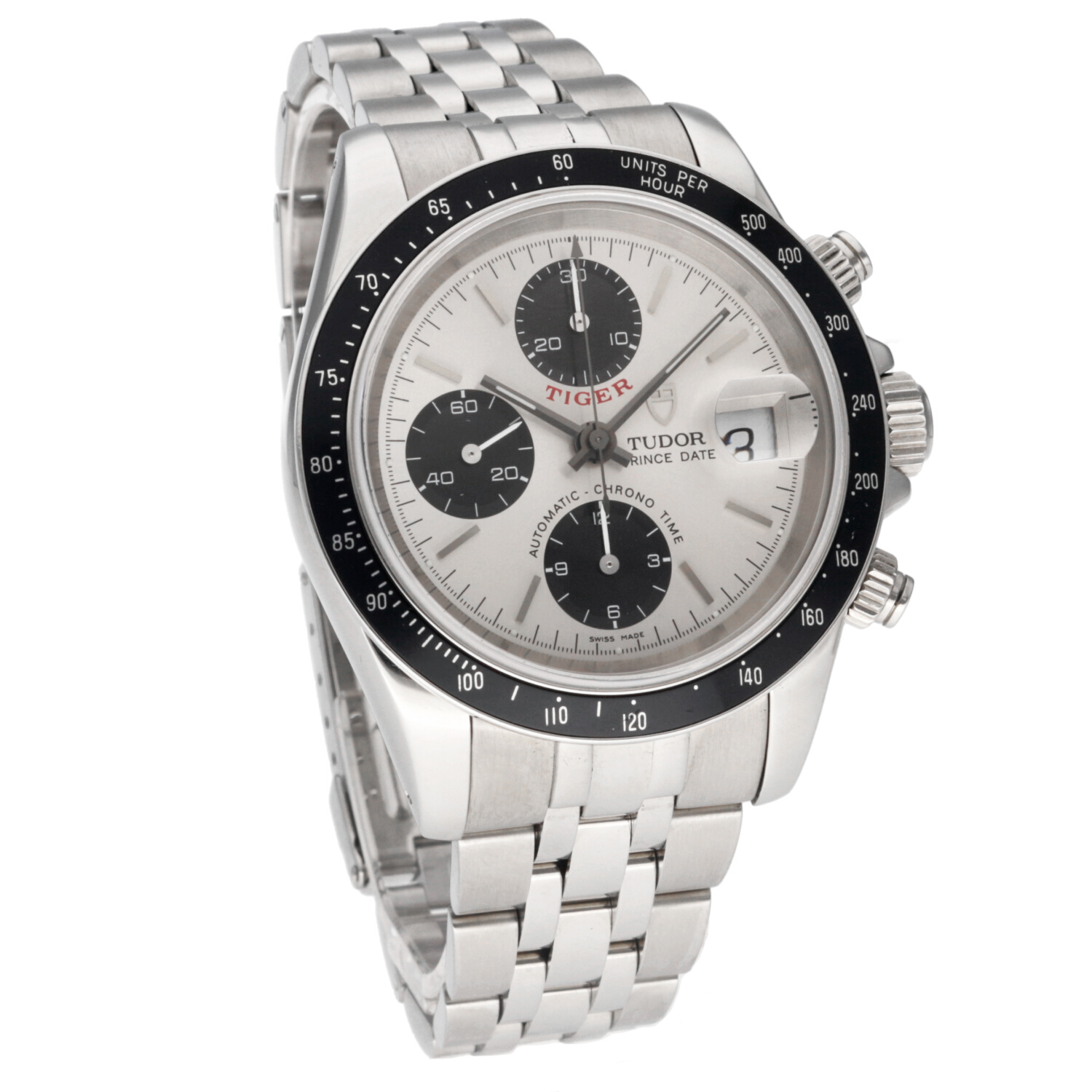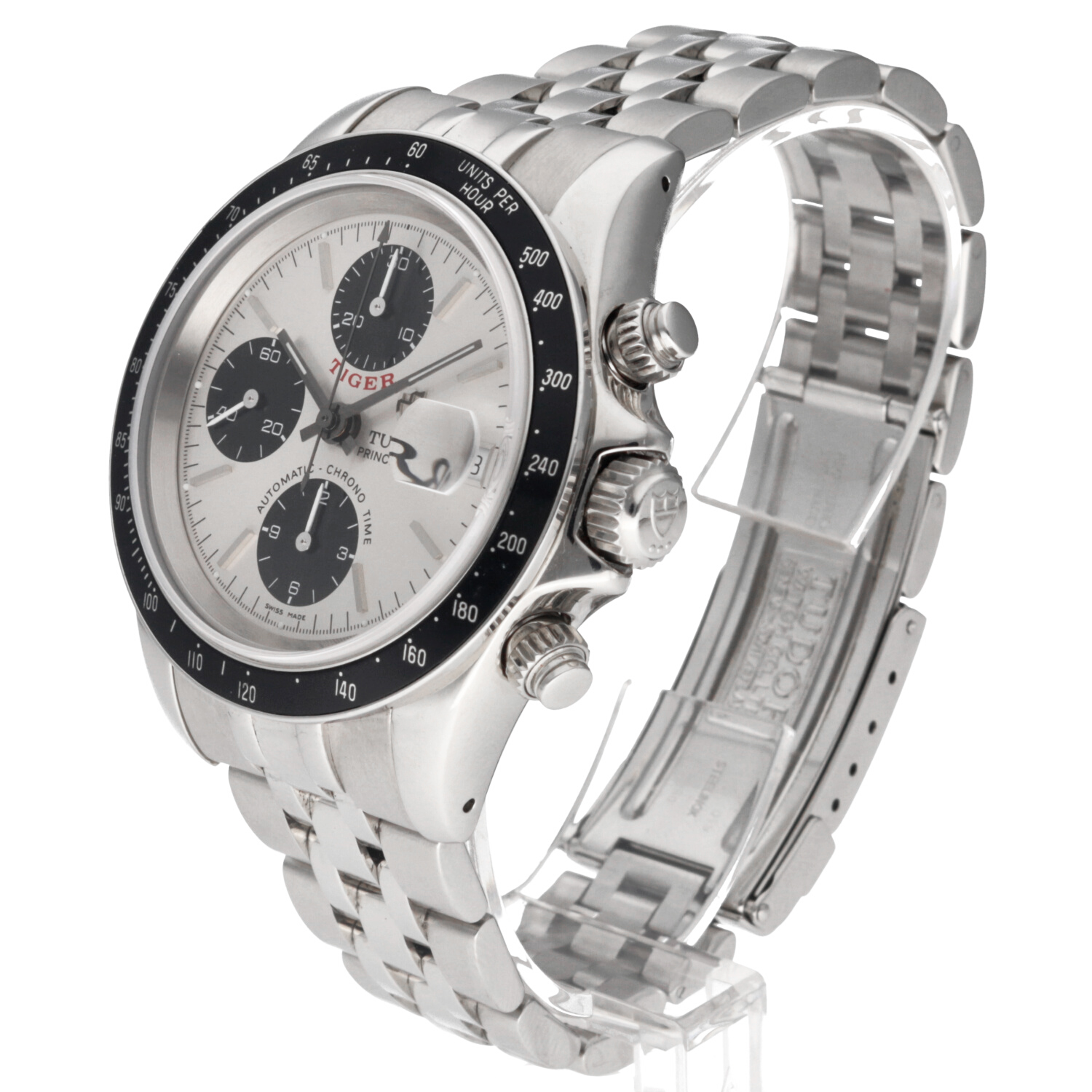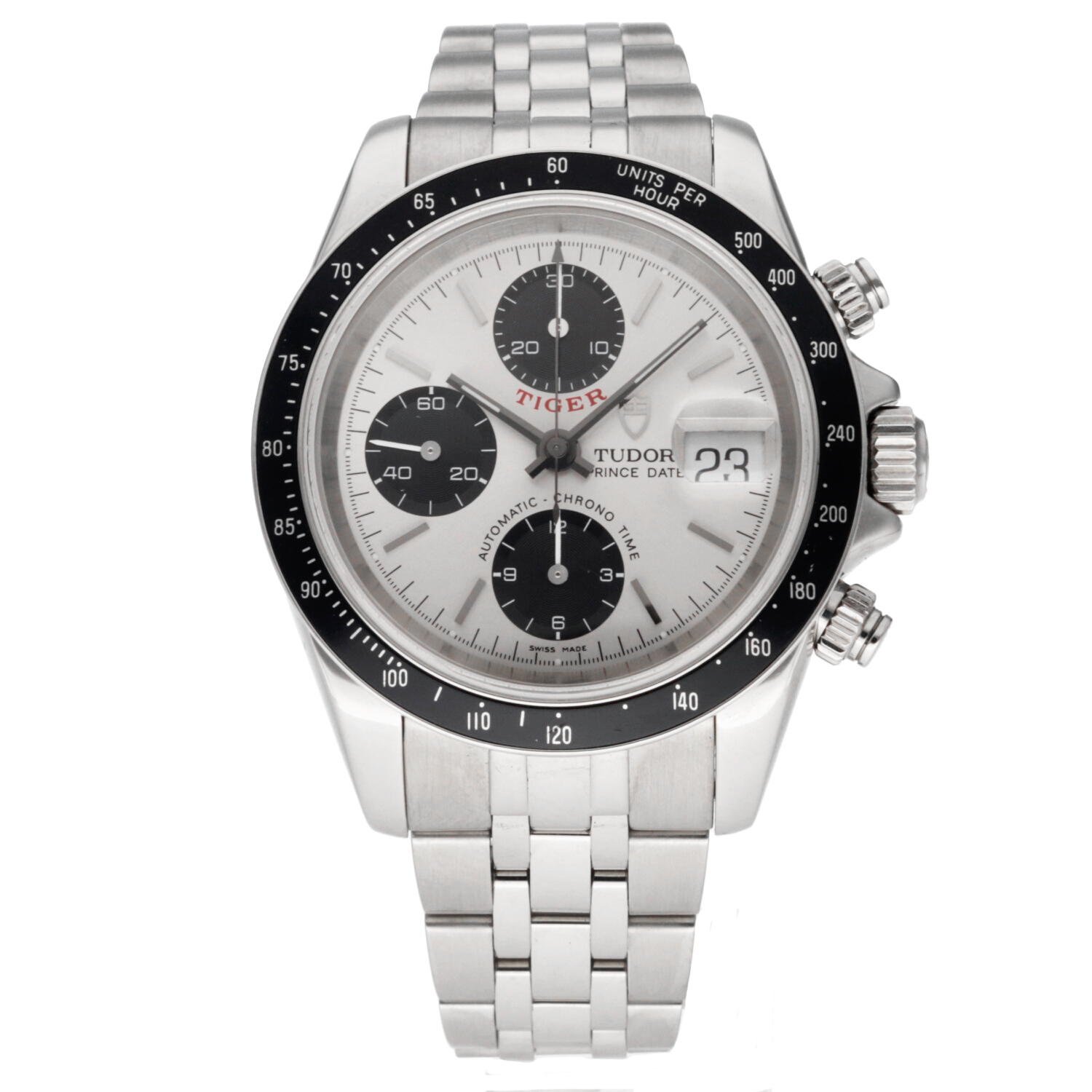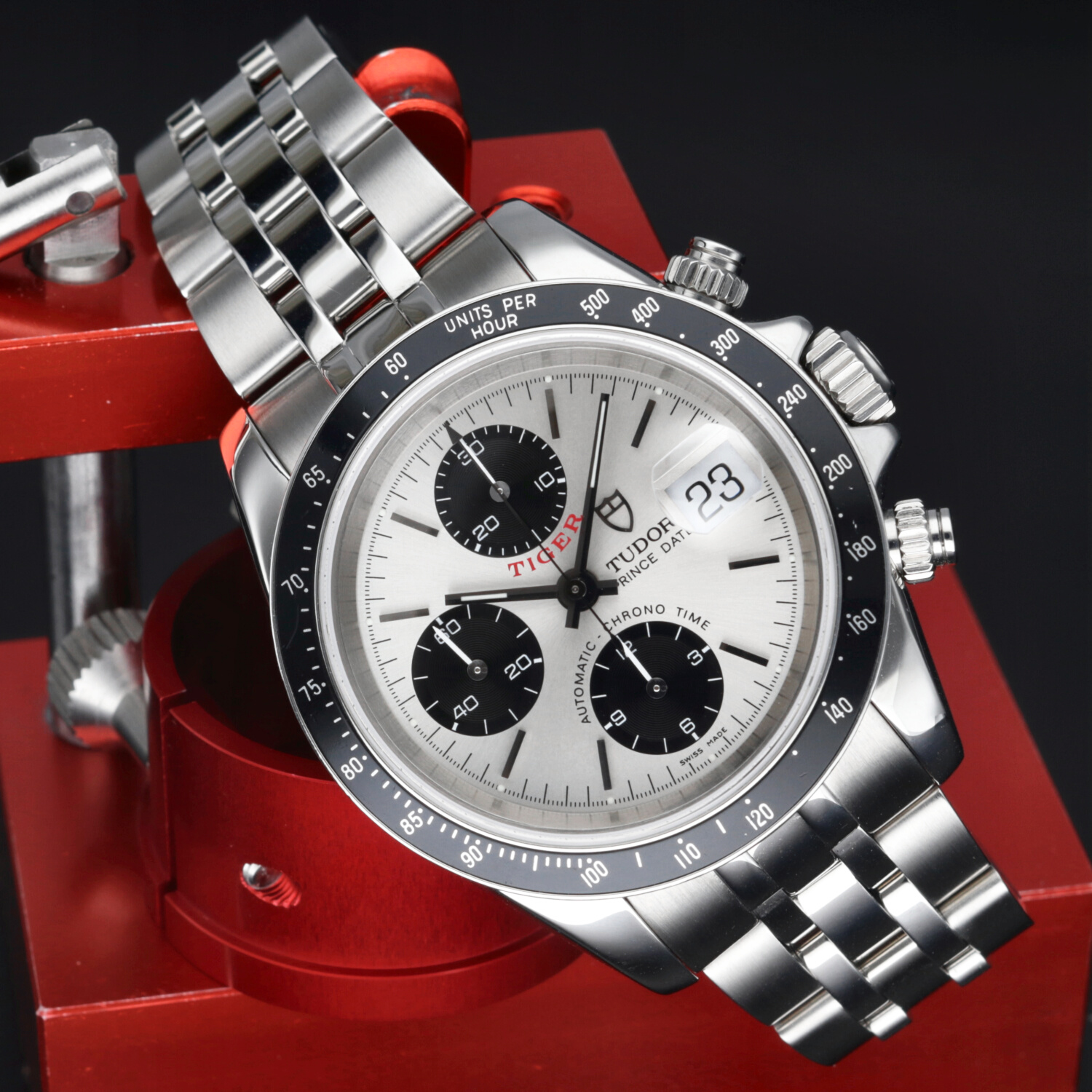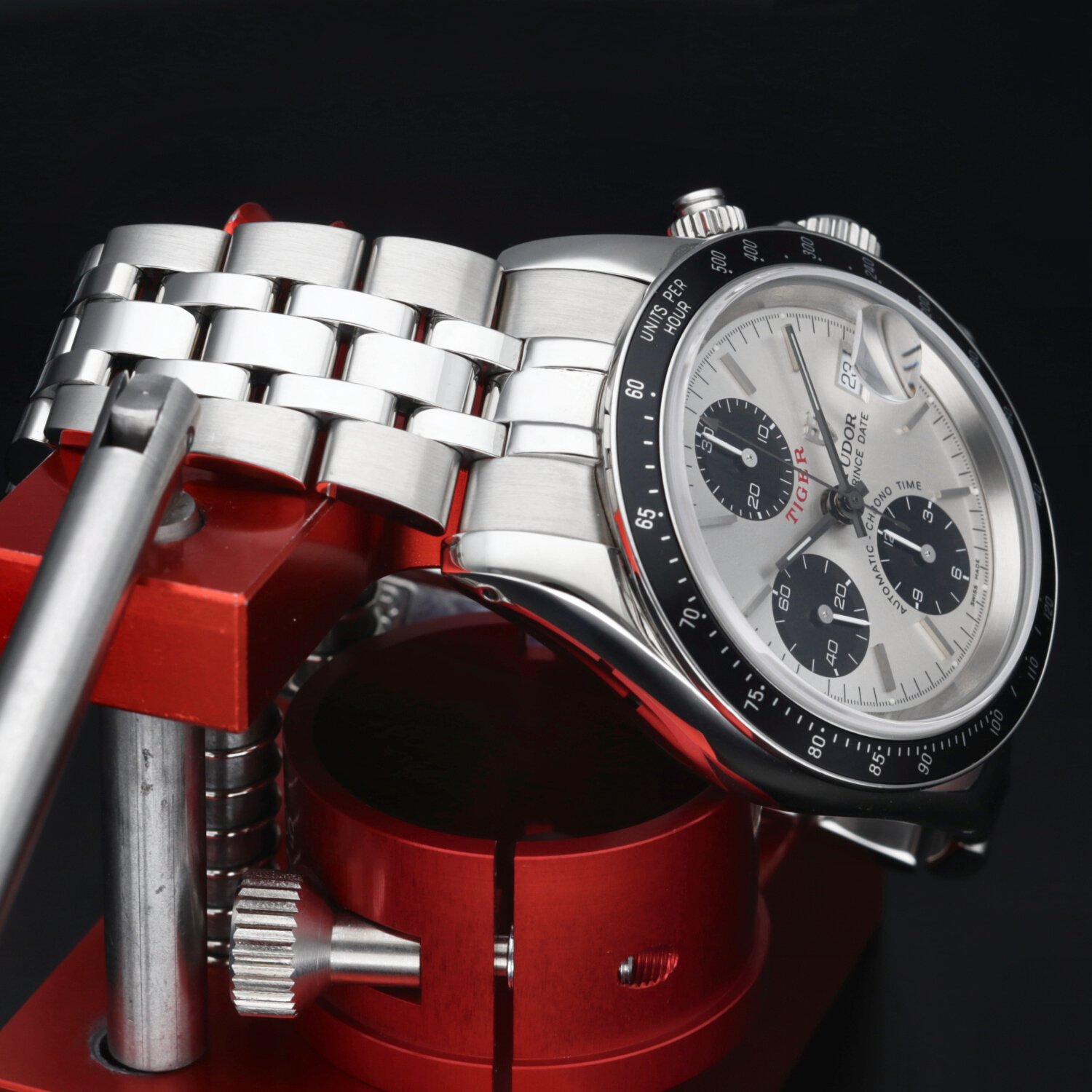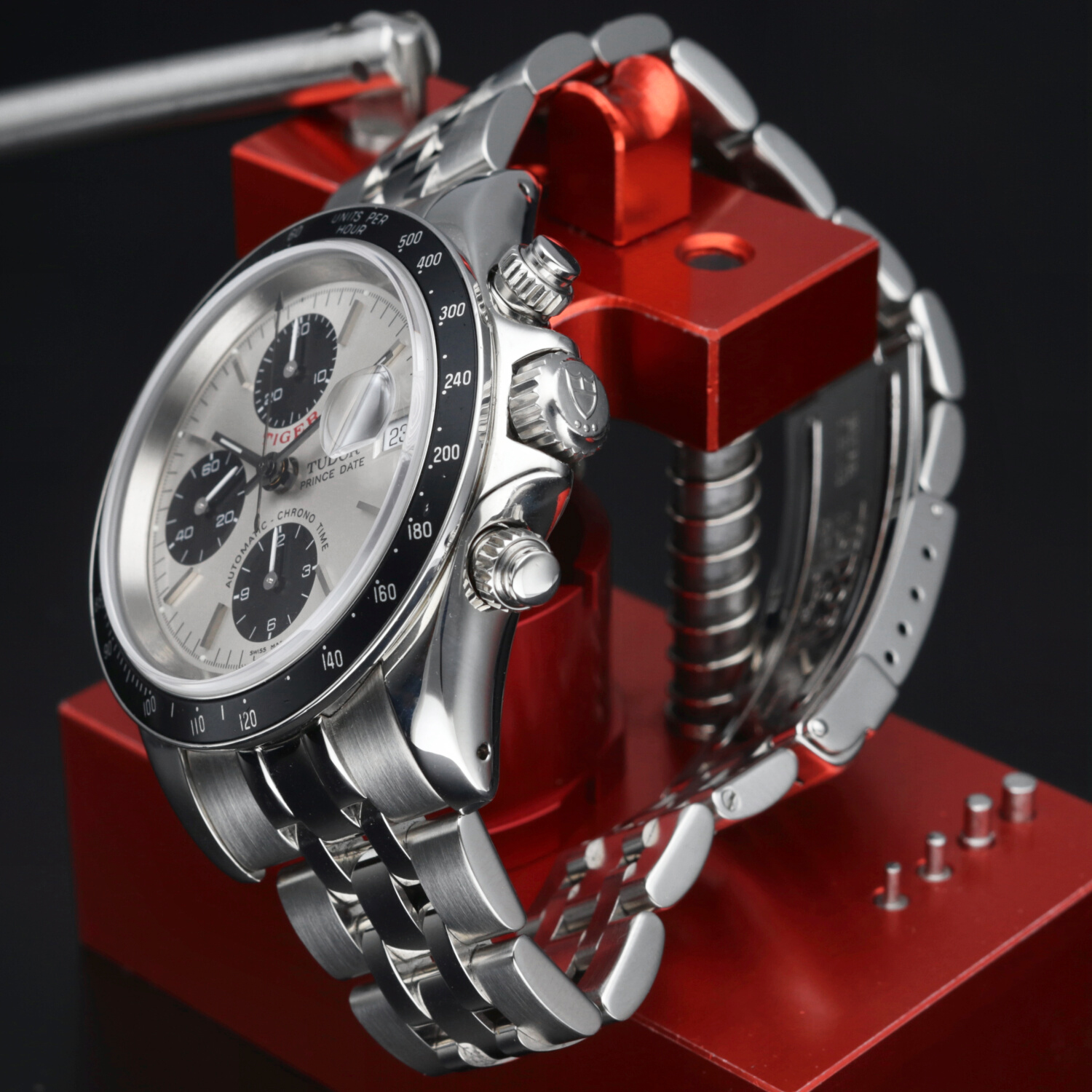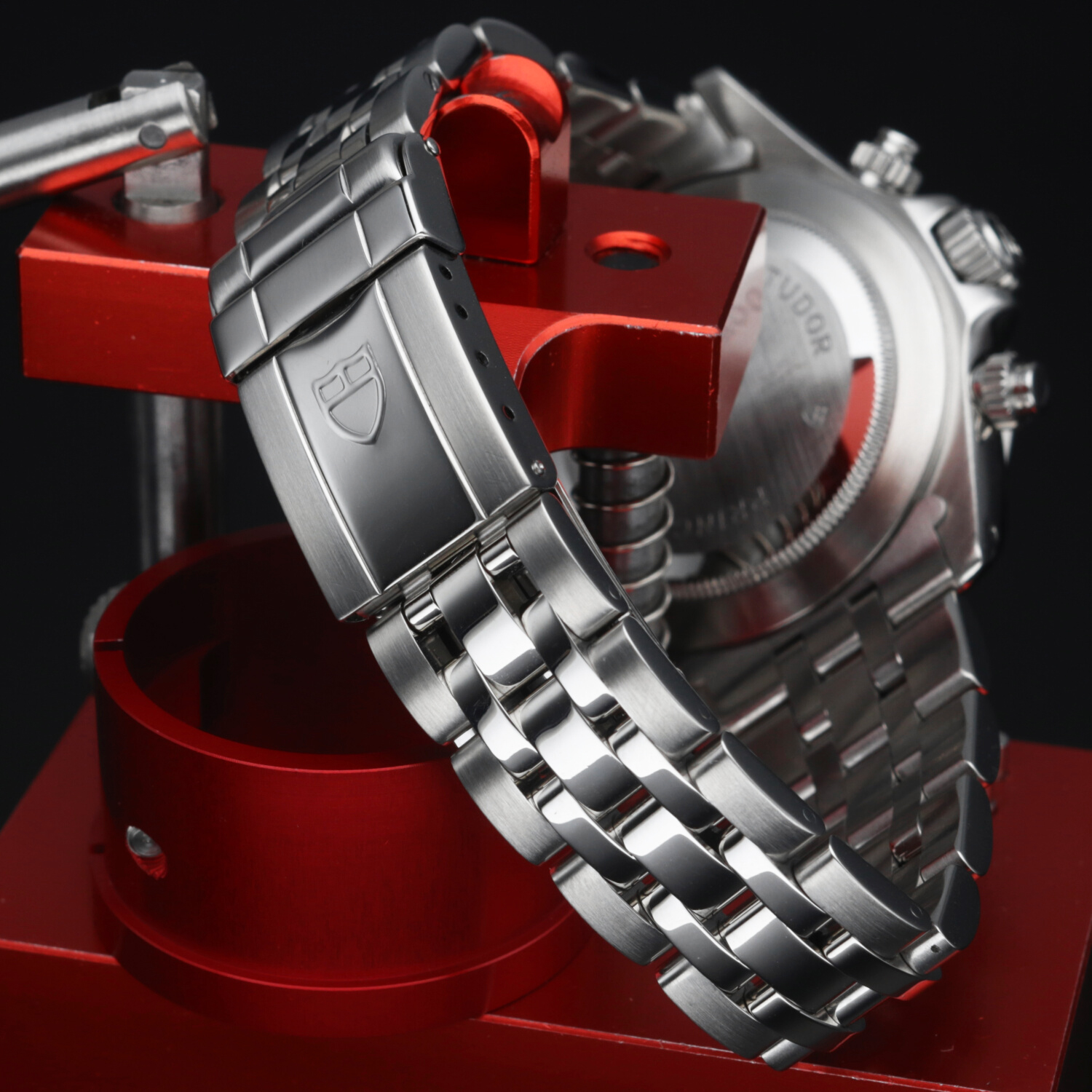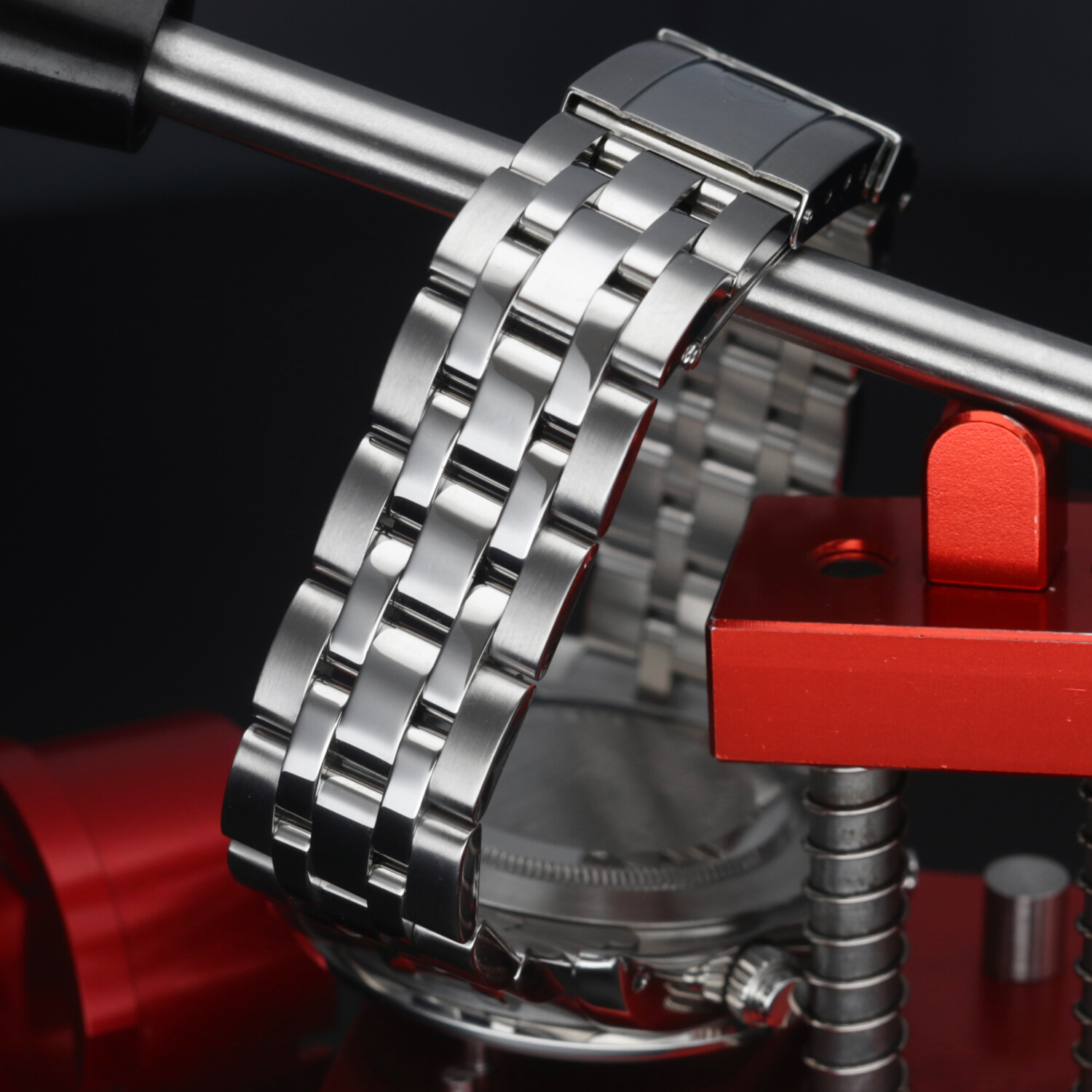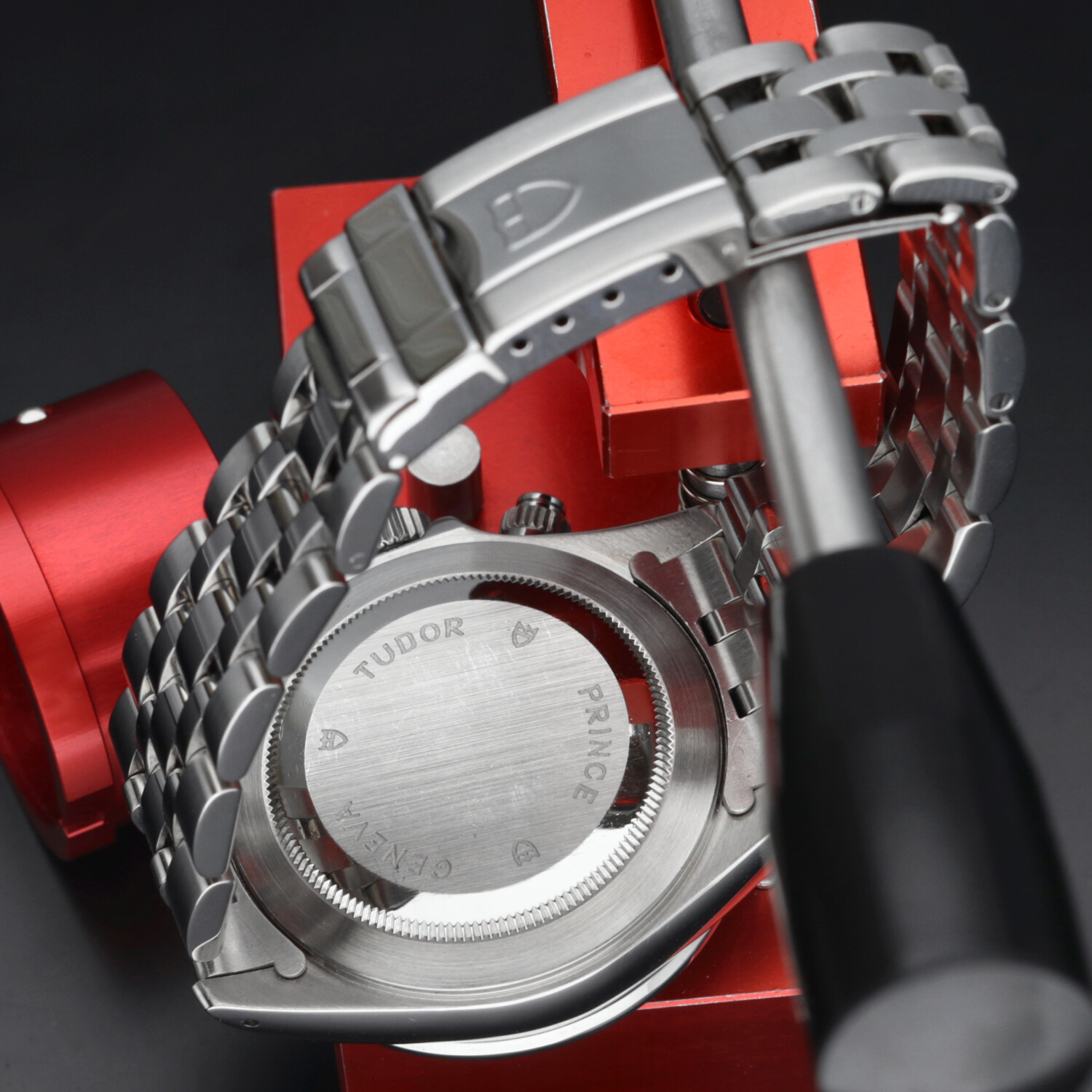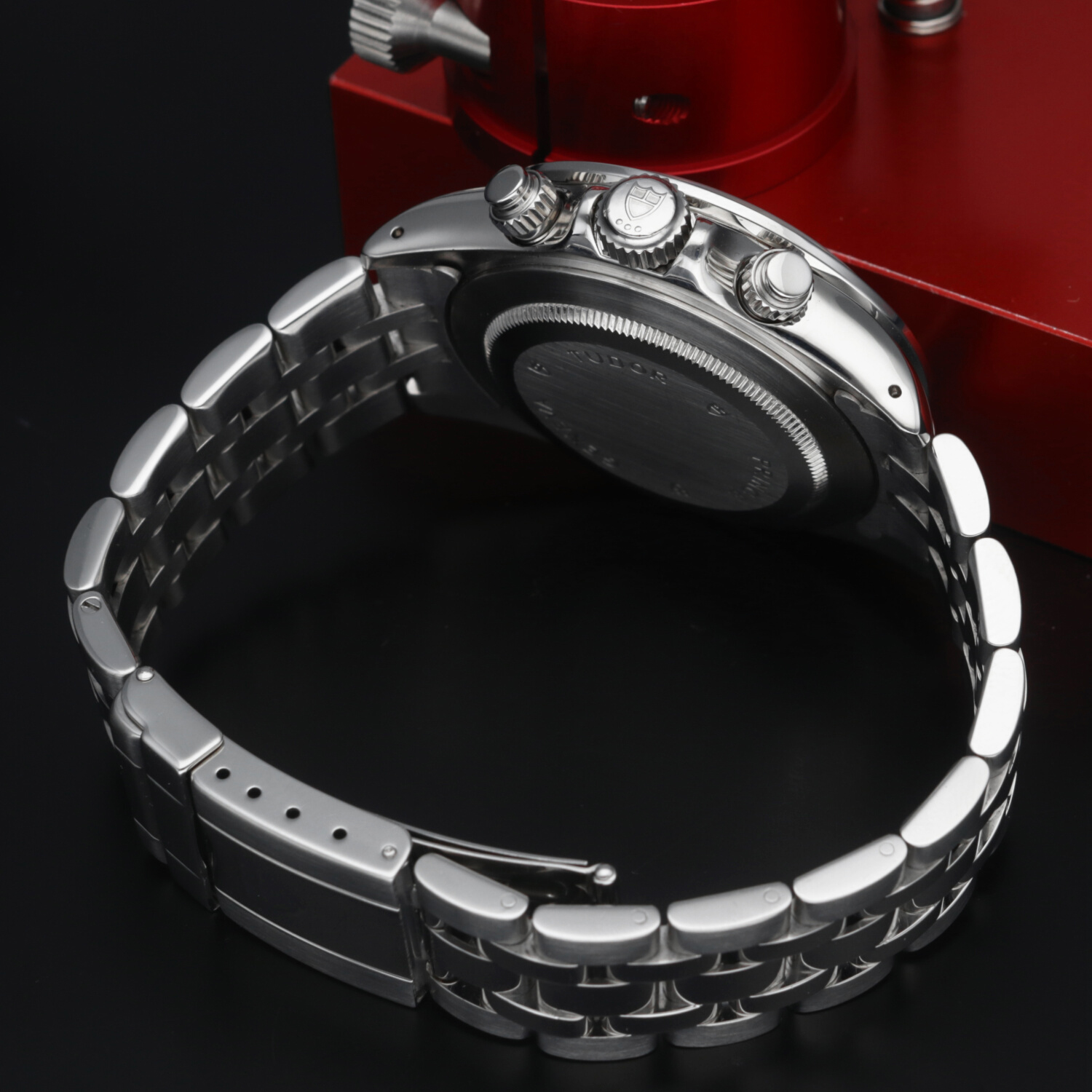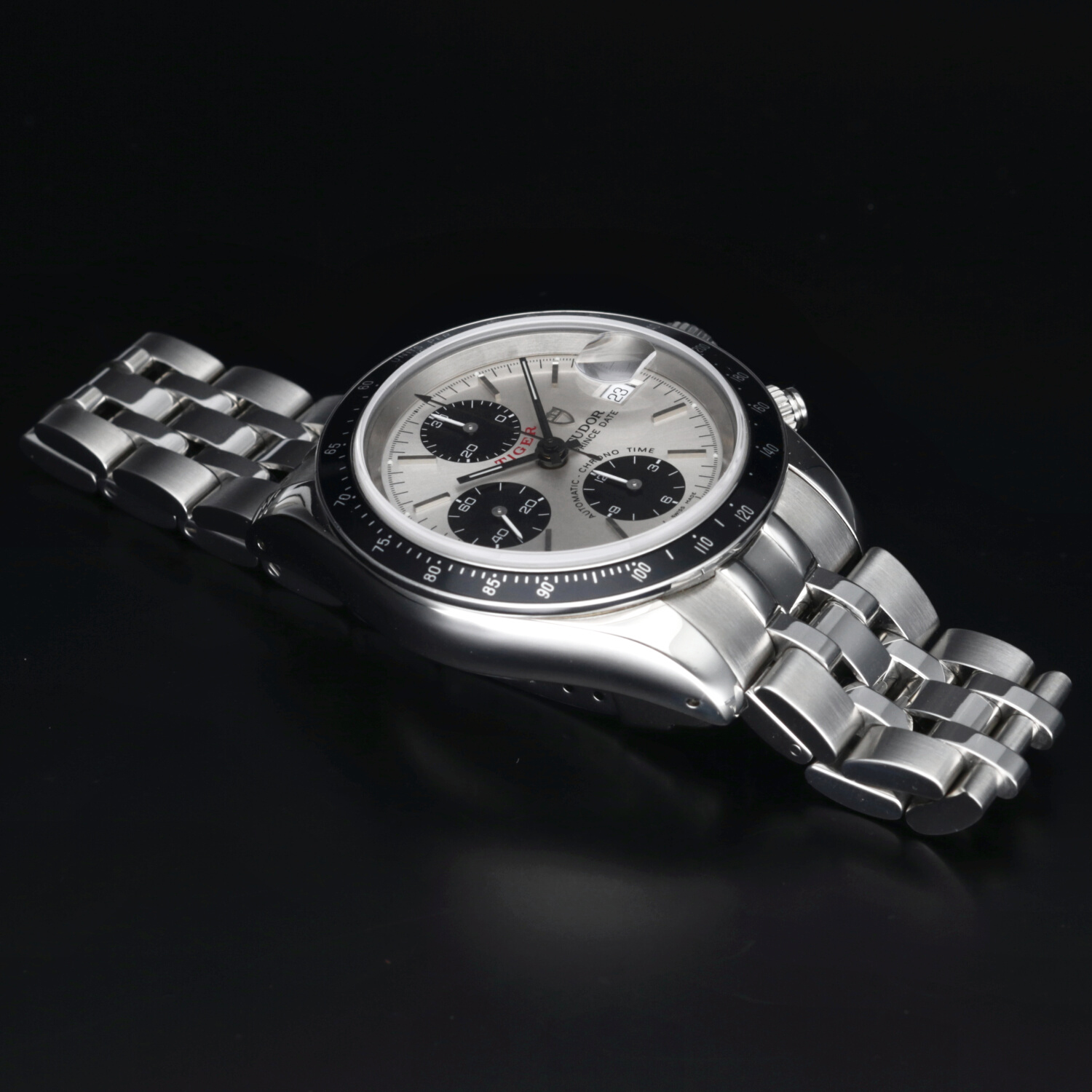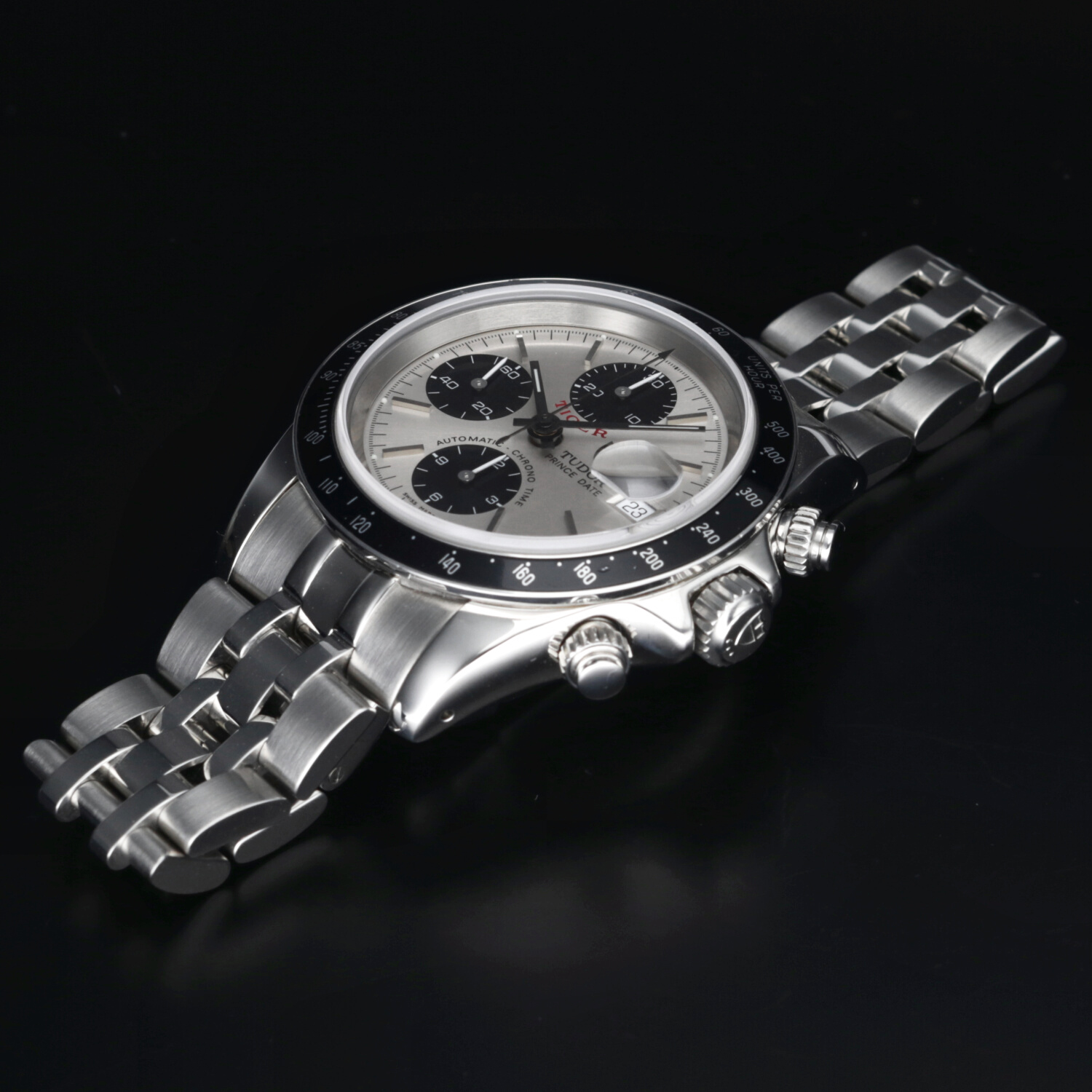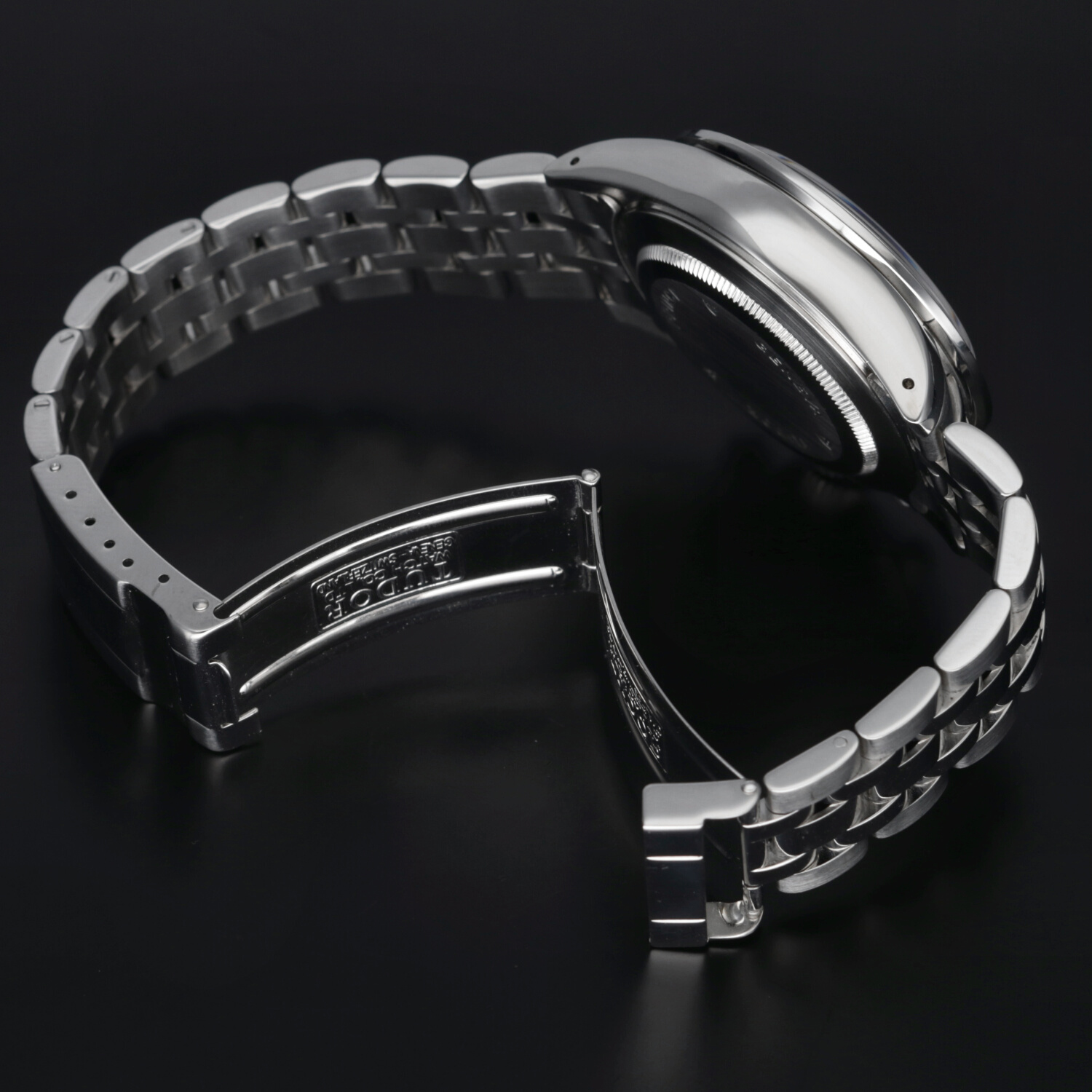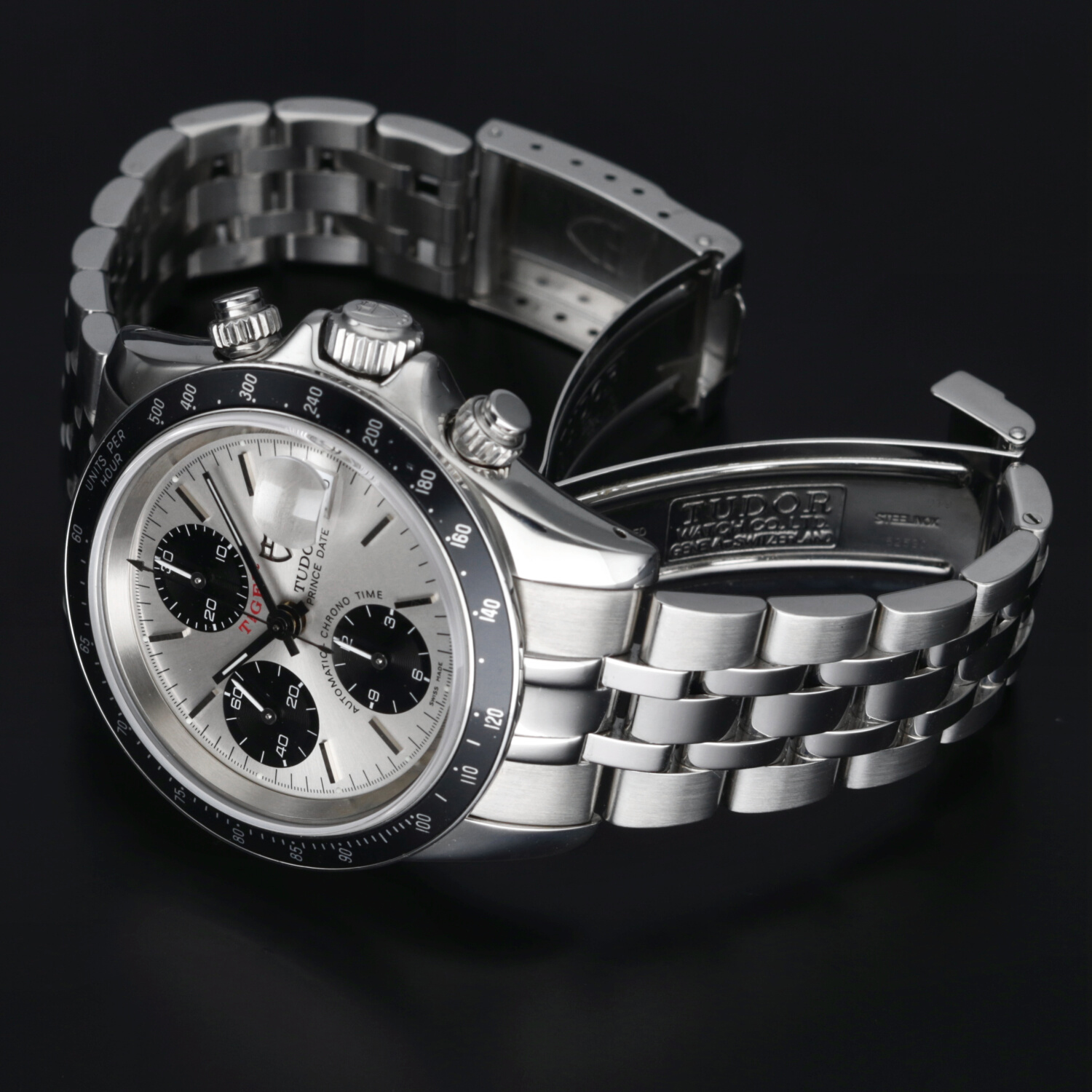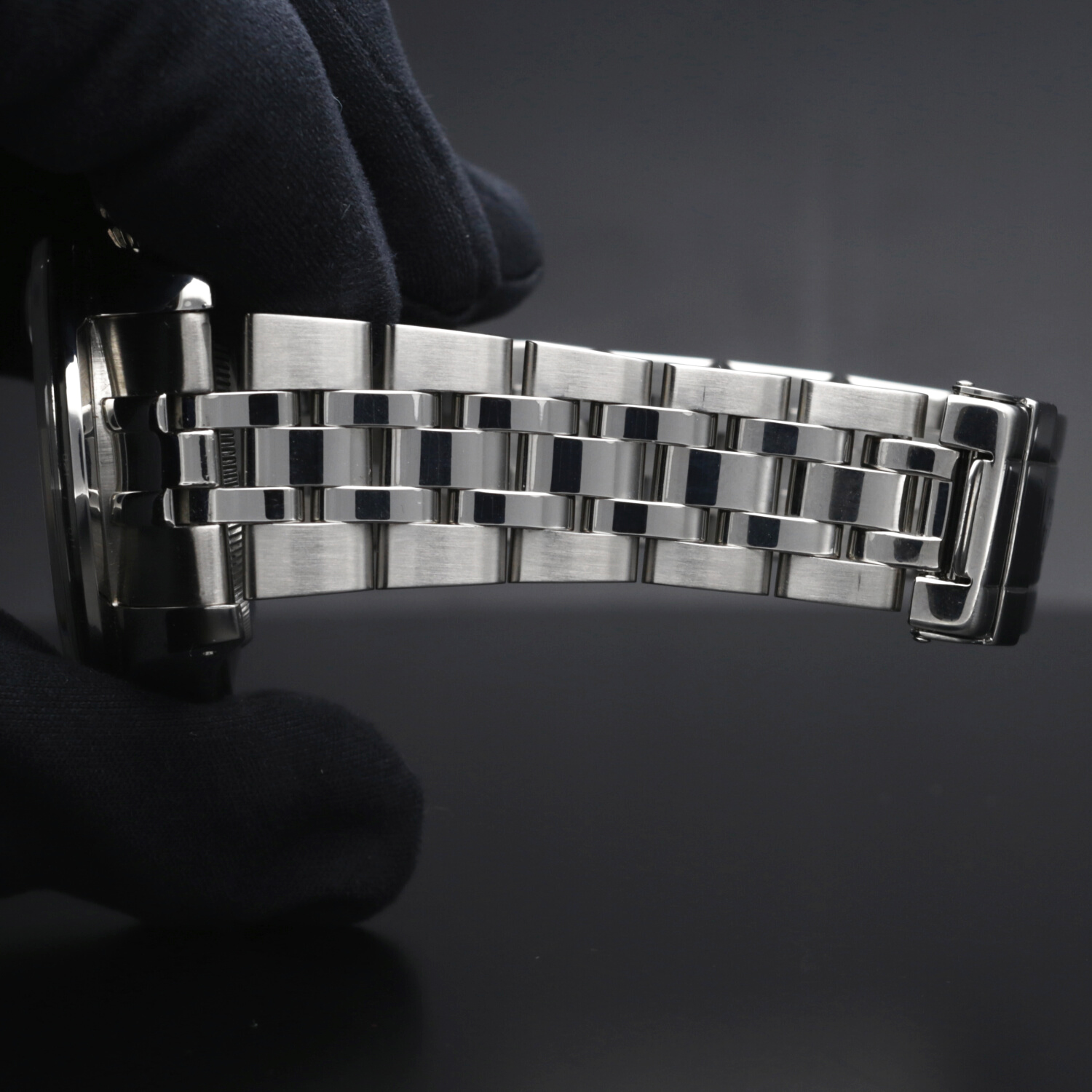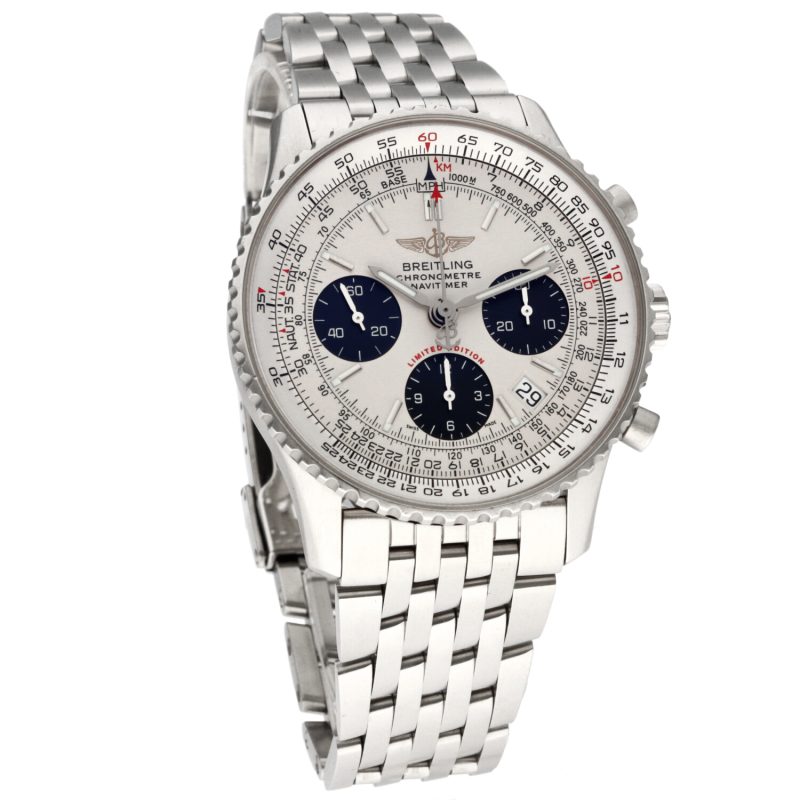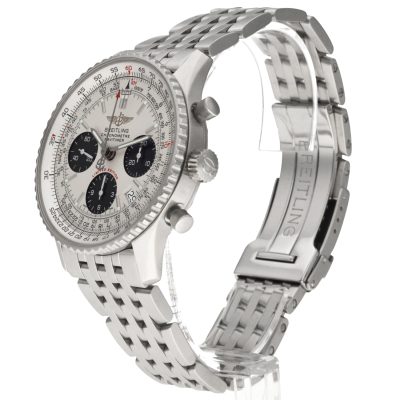2002 Tudor “Tiger” ref. 79260P Chronograph Prince Date Small Block Panda Dial, Serviced
Shipping Free by Express Courier
14-day inspection period
Authenticity Guaranteed
2-Year Limited Warranty

Additional information
| Brand | |
|---|---|
| Model | |
| Ref. | 79260P |
| Serial Number | H42**** |
| Year of production | |
| Movement | Automatic |
| Case material | |
| Size | 40 mm |
| Dial | Silver |
| Bracelet material |
Info
The Tudor Chronograph saw its “birth” in 1976 with the 9400 series, and was the first chronograph from the Swiss brand Tudor/Rolex to be equipped with an automatic movement, 12 years before elder sibling Rolex fitted the Daytona with self-winding ones. To accommodate the rotor of the movement the case of the Prince Oysterdate was made thicker, hence the nickname of “Big Block”. In 1989 the 9400 series was replaced with the 79100 series, the changes introduced compared to the 9400 series were however minimal. Both series used a large number of Rolex components, such as the winding crown, chronograph push-piece, bezel, caseback, crystals and bracelets, the latter being replaced with Tudor shield clasps late in the series’ production 79100. In 1995, with the introduction of the series of 79200 references, the appearance of the Prince Oysterdate self-winding chronograph was rethought subtly but significantly. To begin with, the case, which over three generations of chronographs had essentially retained its famous imposing, sharp presence, became more refined and softer (Small Block). Another notable change, a sapphire crystal with a Cyclops lens was adopted to replace the Plexiglas crystal. Thus the direct references to Rolex were gradually disappearing from the cases, winding crowns and bracelets of TUDOR watches. As of 1998, the TUDOR Prince Oysterdate chronographs appeared in the catalogue on steel bracelets with five links referenced 62490 (Jubilee) and signed TUDOR. The Oyster bracelet was thus progressively abandoned. The watch for sale with reference 79260P (black aluminum bezel, polished case lugs) was produced in 2002, has a beautiful and sought after “Tiger Woods” panda silver dial, and is completely coeval with the year of production.
Case, Bracelet, Dial & Glass
Excellent case that shows very light wear from use. The black bezel insert is also in excellent condition and shows very light wear.
Excellent 62590 Jubilee Tudor bracelet with 13 links and DT9 data code (September 2002). Bracelet has very light stretch from use and fit a max wrist size of ca. 19 cm.
Excellent silver “Tiger” panda dial with black subdials and matching hands.
Excellent sapphire crystal.
Accessories & Warranty
Generic watch box (not Tudor original), our warranty card, certificate of authenticity and lawful origin.
Serviced, Two-Year Limited Service Warranty with certificate of authenticity. The OeDVintage, Orologi & Dintorni Vintage. Two-Year Service Warranty is limited to two full year from the date of your purchase. The limited warranty covers mechanical issues not related to negligence or any type of user-inflicted damage.
You may also like…
4.600,00€


